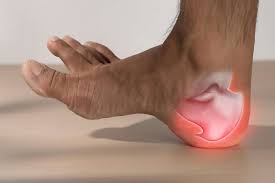Flat feet, also called fallen arches, is a condition where the arch of the foot is either absent or reduced. While some people with this condition experience no challenges, for others, it can affect comfort, posture, and mobility. Understanding flat feet and how they influence your day-to-day life is key to managing the condition effectively and maintaining an active lifestyle.
What Are Flat Feet and How Are They Diagnosed?
Flat feet occur when the arches of your feet do not develop properly or collapse over time. This can happen in childhood or later in life due to factors like aging, injuries, or repetitive strain. Genetics, obesity, and certain medical conditions may also contribute. Many people live with this condition without complications, but in some cases, it can cause discomfort during long periods of standing, walking, or running.
A podiatrist or orthopedic specialist typically diagnoses these during a physical examination. The examination may involve observing your foot shape while standing, walking, or performing balance tests. Imaging tests such as X-rays or MRIs may also be used to assess alignment, bones, and soft tissues in the feet. Proper diagnosis is the first step to determining the best way to address any issues linked to flat feet.
How Do They Affect Your Daily Activities?
They can impact daily routines in various ways. For those with symptomatic flat feet, tasks such as standing for extended periods, frequent walking, or engaging in active sports may feel uncomfortable. The lack of arch support can cause strain on the feet, ankles, knees, and even your back, which may affect posture and overall ease of movement.
Certain jobs that involve long hours on your feet can become more challenging when this condition is left unsupported. Without adequate footwear or orthotics, it can also lead to faster fatigue during physical activities. This potentially limits your ability to stay active or perform at your usual pace. While these outcomes aren’t guaranteed, they’re common enough to warrant preventative measures or management strategies to maintain comfort and mobility.
What Treatment Options Are Available?
Treatment for flat feet varies depending on symptoms and severity. Some solutions focus on reducing discomfort, improving support, and maintaining mobility. Here are standard treatment options to explore:
- Supportive footwear: Shoes with built-in arch support and cushioned soles can help reduce strain on the feet. Athletic or orthopedic footwear works well for many daily activities.
- Orthotic insoles: Custom or pre-made insoles provide additional arch support and help align the feet properly. They fit inside your shoes and are easily removable.
- Stretching and strengthening exercises: Specialized exercises target muscles and ligaments in the feet and calves, promoting flexibility and improved arch support.
- Physical therapy: Guidance from a physical therapist can help improve posture, gait, and lower-body alignment.
- Weight management: Keeping weight in a healthy range can reduce pressure on your feet and lower body, potentially preventing worsening symptoms.
Before implementing any treatment plan, consult with a specialist or healthcare provider to identify which options best meet your needs. Simple adjustments often improve functionality and relieve discomfort.
Visit a Podiatry Specialist for Evaluation
Flat feet do not always require intervention. When discomfort or other challenges arise, taking proactive steps can prevent small issues from becoming larger ones. Specialists can determine the cause, identify contributing factors, and recommend tailored management strategies to improve your comfort and mobility. Book an appointment today to take the first step toward greater support and care for your feet.
- What Is Medicaid Exclusion For Funeral Plans – Benefits of Medicaid Funeral Exclusions!
- Banner Desert Medical Center – Trusted Care in Arizona!
- Why Cranberry Femine Health – The Ultimate Natural Wellness Guide for Women!
- What Is The Best Peptide For Bone Health – A Comprehensive Overview!
- Why Is Signify Health Calling Me – Understanding the Purpose Behind the Call!

Leave a Reply